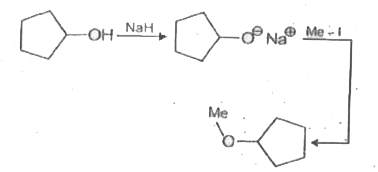Materilas around us can be classified into __________.
Elements and compounds
Metals and non-metals
Acids and base
None of these
The correct Answer is:B
Step-by-Step Text Solution:
1. Understanding the Question: The question asks how materials around us can be classified. This means we need to identify the categories into which these materials can be grouped.
2. Identifying Options: The options provided are:
- A) Elements and Compounds
- B) Metals and Non-metals
- C) Acids and Bases
- D) None of these
3. Analyzing Each Option:
- Option A (Elements and Compounds): This classification is based on the chemical composition of materials. While it is valid, it does not specifically address the physical properties of materials.
- Option B (Metals and Non-metals): This classification is based on the physical and chemical properties of materials. Metals are typically shiny, good conductors of heat and electricity, while non-metals are dull and poor conductors (with some exceptions).
- Option C (Acids and Bases): This classification is based on the chemical nature of substances, specifically their pH levels. It is not a comprehensive classification for all materials.
- Option D (None of these): This option suggests that none of the classifications are correct, which is not the case.
4. Choosing the Correct Answer: Based on our analysis, the most appropriate classification of materials around us is B) Metals and Non-metals. This classification encompasses a wide range of materials based on their properties.
5. Conclusion: Therefore, the answer to the question "Materials around us can be classified into __________" is Metals and Non-metals.
---
- A) Elements and Compounds
- B) Metals and Non-metals
- C) Acids and Bases
- D) None of these
- Option A (Elements and Compounds): This classification is based on the chemical composition of materials. While it is valid, it does not specifically address the physical properties of materials.
- Option B (Metals and Non-metals): This classification is based on the physical and chemical properties of materials. Metals are typically shiny, good conductors of heat and electricity, while non-metals are dull and poor conductors (with some exceptions).
- Option C (Acids and Bases): This classification is based on the chemical nature of substances, specifically their pH levels. It is not a comprehensive classification for all materials.
- Option D (None of these): This option suggests that none of the classifications are correct, which is not the case.
Topper's Solved these Questions
- METALS AND NON-METALSBOOK - PEARSON IIT JEE FOUNDATIONCHAPTER - METALS AND NON-METALSEXERCISE - CLASSROOM CORNER ( COMPREHENSION - BASED QUESTIONS)
1 Videos
- METALS AND NON-METALSBOOK - PEARSON IIT JEE FOUNDATIONCHAPTER - METALS AND NON-METALSEXERCISE - CLASSROOM CORNER ( SUBJECTIVE TYPE QUESTIONS)
9 Videos
- METALS AND NON-METALSBOOK - PEARSON IIT JEE FOUNDATIONCHAPTER - METALS AND NON-METALSEXERCISE - HOTS- HIGHER ORDER THINKING SKILLS
18 Videos
- Language of Chemistry and Transformation of SuubstancesBOOK - PEARSON IIT JEE FOUNDATIONCHAPTER - Language of Chemistry and Transformation of SuubstancesEXERCISE - Concept Application Concept Application Level - 1
14 Videos
- MOCK TEST BOOK - PEARSON IIT JEE FOUNDATIONCHAPTER - MOCK TEST EXERCISE - Question
5 Videos
Similar Questions
Knowledge Check
Soaps can be classified as
ACarbohydratesBEthersCSalt of fatty acidsDNone of theseGlucose can be classified as
AaldohexoseBcarbohydrateCreducing sugarDmonosaccharide.Coelenterata can be classified into
AHydrozoa, Actinzoa, PolychaetaBScyphozoa, Hirudinaria, HydrozoaCScyphozoa, Actinozoa, TrematodaDHydrozoa, Actinozoa, Scyphozoa


